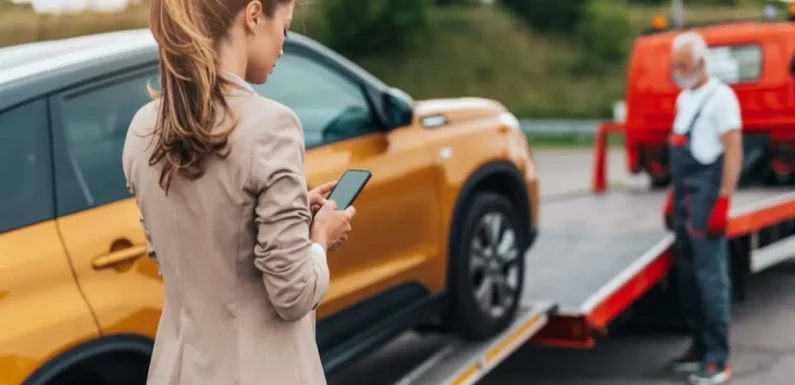
In an age where technology continues to revolutionize various industries, the vehicle recovery sector is no exception. Traditional methods of calling a tow truck or roadside assistance service are being supplemented and, in some cases, replaced by innovative mobile applications. These apps offer a seamless and efficient way to request assistance during emergencies, changing the landscape of vehicle recovery. In this article, we delve into the future of vehicle recovery through the lens of towing and roadside assistance apps.
The Evolution of Vehicle Recovery:
Traditionally, automobile recuperation relied heavily on manual approaches, with drivers needing to find and get in touch with towing companies or roadside assistance offerings through telephone calls or bodily directories. This approach often ended in delays, inefficiencies, and confined transparency for drivers in distress. However, the appearance of the mobile era has converted this panorama, presenting a platform for on-demand assistance at the touch of a button.
The Rise of Towing and Roadside Assistance Apps:
Towing and roadside assistance apps have emerged as a sport-changer in the automobile restoration enterprise. These apps leverage GPS technology, real-time monitoring, and user-pleasant interfaces to attach drivers with nearby provider providers hastily. With only some taps on their smartphones, users can request offerings which include towing, bounce-starts off evolved, tyre adjustments, fuel delivery, and lockout assistance, among others.
Key Features and Functionality:
The success of towing and roadside assistance apps hinges on their ability to offer essential features and seamless functionality. Some of the key features include:
Geolocation Services: Utilizing GPS technology to pinpoint the user’s location accurately.
Service Selection: Allowing users to specify the type of assistance required.
Real-Time Tracking: Providing real-time updates on the service provider’s ETA and location.
Secure Payment Options: Facilitating cashless transactions for added convenience and security.
User Reviews and Ratings: Empowering users to make informed decisions based on the experiences of others.
24/7 Availability: Ensuring round-the-clock assistance for drivers in need, regardless of the time or location.
Benefits for Drivers:
Towing and roadside assistance apps offer numerous benefits for drivers, including:
Convenience: Accessing assistance anytime, anywhere, with minimal hassle.
Speed: Quick response times and efficient service delivery, reducing downtime for drivers.
Transparency: Clear pricing, real-time updates, and user reviews enhance transparency and trust.
Safety: Prompt assistance helps ensure the safety and well-being of drivers and passengers.
Cost-Effectiveness: Competitive pricing and transparent billing contribute to cost savings for drivers.
Towing and roadside assistance apps leverage advanced technologies such as GPS, AI, and machine learning to optimize service delivery.
AI-powered algorithms match service requests with the most suitable providers based on factors such as location, vehicle type, and service required, improving efficiency and customer satisfaction.
Integration with telematics systems allows for proactive monitoring of vehicle health and predictive maintenance, reducing the likelihood of breakdowns and improving overall reliability.
Challenges and Opportunities:
In spite of their numerous advantages, towing and roadside help apps face stressful conditions consisting of regulatory hurdles, competition, and ensuring the quality of company vendors.
But, those demanding situations also present opportunities for innovation, collaboration, and marketplace expansion. Through addressing regulatory problems, enhancing carrier great, and exploring new markets, towing and roadside assist app companies can thrive in the evolving landscape of vehicle healing offerings.
The Future Outlook:
The destiny of car restoration lies within the enduring evolution of towing and roadside help apps, pushed through improvements in technology and converting patron expectations.
Integration with related automobile systems, self-sustaining motors, and smart city initiatives will similarly enhance the talents of these apps, presenting predictive assistance and personalized services tailored to personal motive force desires.
As the demand for handy, reliable vehicle recovery answers keeps to grow, towing and roadside assistance apps are poised to play a principal role in shaping the destiny of mobility and making sure easy trips for drivers round the arena.
Conclusion:
Towing and roadside assistance apps represent a transformative shift in the vehicle recovery industry, offering drivers unprecedented convenience, efficiency, and peace of mind. As technology continues to advance and consumer expectations evolve, these apps will play an increasingly vital role in ensuring safe and seamless journeys on the road.
By embracing innovation, addressing challenges, and adapting to changing market dynamics, towing and roadside assistance mobile app development companies can lead the way towards a future where breakdowns are no longer a source of stress but rather an opportunity for efficient, tech-driven solutions.
As the demand for convenient, reliable vehicle recovery solutions continues to grow, towing and roadside assistance apps are poised to play a pivotal role in shaping the future of mobility. With ongoing advancements and evolving consumer expectations, these apps will continue to evolve, offering personalized, predictive, and proactive assistance tailored to individual driver needs.
As we embrace this era of digital transformation, let us look forward to a future where breakdowns are no longer a source of stress but rather an opportunity for efficient, tech-driven solutions, ensuring smooth journeys for drivers worldwide.

